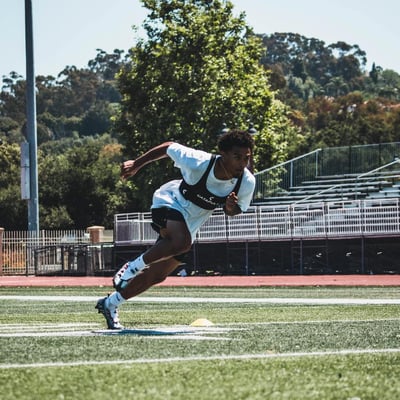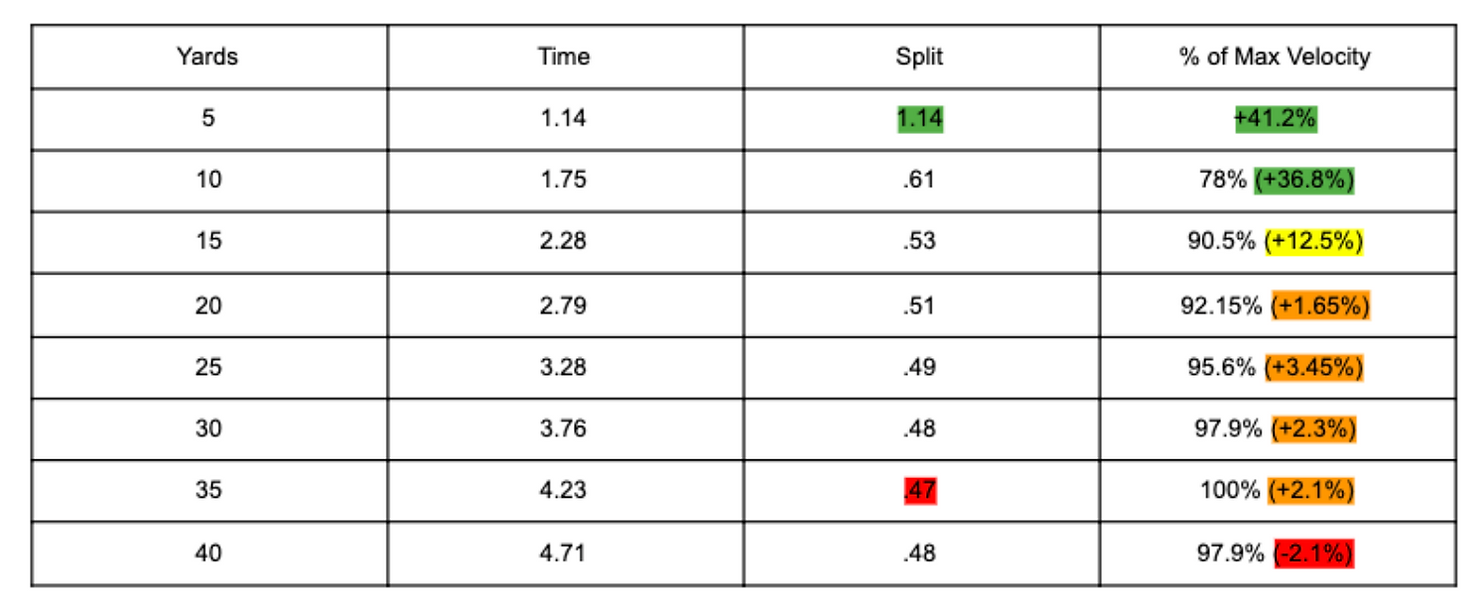The highest rate of change during a sprint happens in Early Acceleration. For purposes of this article, we'll define "early" as 0-5 yd split (usually 4 steps).

In the chart below, the 0-5 split accounts for 41.2% of the climb in velocity. Within 15 yards, this athlete is showing 90.5% of his total velocity. At 20 yards, 92.15% of total velocity
This is pretty standard in what we see with athletes coming into train with us before the NFL Combine. In full transparency, the largest changes we make sometimes are within 0-5 yards. While we see small, but significant changes in splits in max velocity-- these first few splits are large opportunities for improvement.

In our Sunday zoom talks we talk a lot about the relationship between horizontal force & acceleration (thank you @ JB Morin, Samazino, Matt Cross, Mathieu Lacome, Cam Josse). Horizontal force allows for sagital plane projection.
Vertical Force + Horizontal Force = Resultant Force
Ratio of Horizontal to Vertical Force = RF%
RFMax = Peak of horizontal force
Decrease in Ratio of Horizontal Force (as velocity increases) = DRF%

So, is horizontal force MORE important than total (resultant) force in determining success in early acceleration?
YES.
Near perfect correlation (r = 0.94 to 0.95) between RFMAX value and early acceleration performance.
(Neil Bezodis, Steffi Colyer, Ryu Nagahara, Helen Bayne, Ian Bezodis, Jean Benoît Morin, Munenori Murata, Pierre Samozino)
Step Velocities - RF%

Here we see the rate of change in velocity from 0-1 is highest & it reduces every step. The Initial RF% is 56% and by step 4 is 45% so the DRF% is roughly -9%.
Hence, our focus for the majority of our athletes is developing a strong RFMax. In the next few articles, I will go through how we profile, then program for these athletes.
In the meantime, watch my Guide to Acceleration & start implementing it with your athletes.